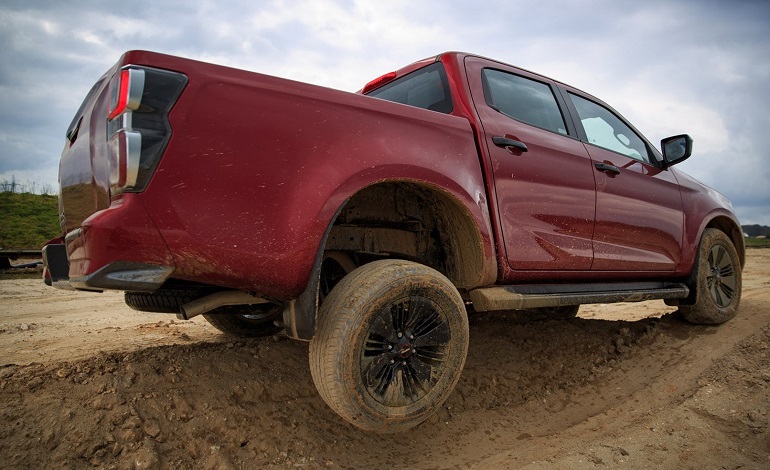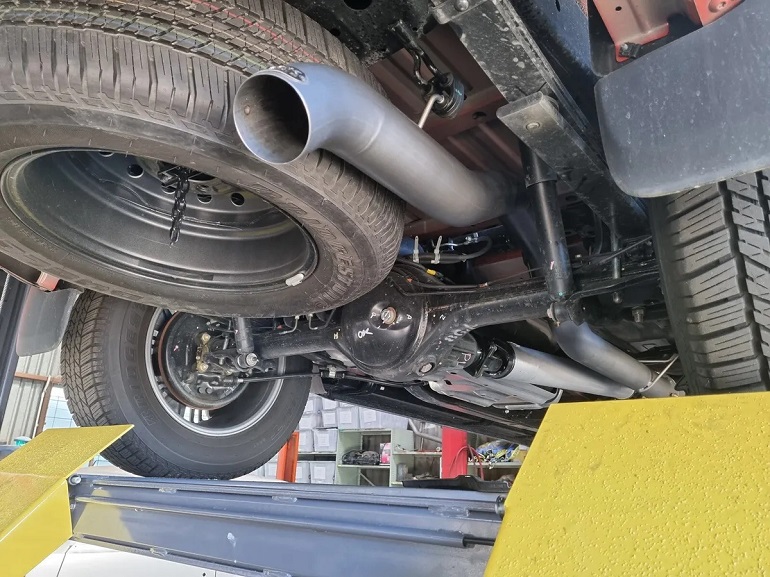The Isuzu D-Max has always been the intelligent buy for utes. The current 3rd-gen car has the willing and reliable 3-litre diesel pumping out 140kW and 450Nm of pulling power. Isuzu has refined the engine for even more reliability while putting in decent consumption figures. The swathes of new safety tech, an upscale interior, and more cabin comfort have catapulted it to third place in overall ute sales.
Much of the current car’s appeal is down to work done in previous model generations. These too had the same engine, though in a lower tune, with 120kW and 360Nm. Not spectacular by modern standards, considering what else is available. If you’re still holding onto an older D-Max, but want a bit more push and shove, at least comparable to the current model, an aftermarket D-Max exhaust helps the engine breathe, generate more power and pick up speed faster.
Why Change the Exhaust System on your D-Max?

The diesel engine in any guise has a lot to give, but the stock exhaust is a major factor that hinders performance and power figures. It’s narrow, restrictive, consists of too many bends and isn’t the last word in durability. All this means that exhaust gases get held up in the piping for far too long, building up unnecessary backpressure and preventing the next combustion cycle. Besides robbing the power plant of power, the stock unit doesn’t do the turbo any favours either.
To let the engine breathe, aftermarket exhausts tailored specifically for the D-Max go with wider and straighter tubing, parts that increase exhaust flow, and help maintain consistent temperatures, thereby reducing wear in the exhaust walls. The engine goes through cycles faster, with less stress on pistons, valves and cams, and the turbo gets to spool effortlessly, without gulping for air. The wider diameters additionally help with scavenging, reducing pulsating pressure waves within the piping, which like high temperatures, can cause ruptures. Add in the thicker walls, better production methods and more upscale materials, and you have an investment that will outlast the ute itself.
Exhausting Options
Since this is a turbocharged diesel, a full turbo-back system delivers the best power gains. The whole stock exhaust is changed, with new units consisting of revised header pipes, beefer collectors, higher-flow DPF filters, as well as the choice of resonators and mufflers to fine-tune the sound. Road-going variants need to meet current noise and emissions levels, something builders have addressed with reworked catalytic converters. These do double duty, burning more of the toxic diesel fumes while letting them exit the piping and tips much faster. There’s also more attention to detail, with mounting hardware that nulls vibrations and prolongs pipe life.
DPF-back systems have new pipework from the DPF filter to the tips, with wider mid-section tubes providing better flow and increases in power and torque. And the least expensive options, axle-back exhausts, have reworked mufflers for better sound, and slight gains in power. They come either as aluminised or stainless steel versions, with the latter being better at rust prevention and overall durability.
What to Look For

There are a few key factors that determine you get the right exhaust system for your D-Max:
- Pipe size – go with 3 or 3.5-inch diameters for better exhaust flow. 3-inch variants hit the sweet spot, with better efficiency, lower engine, turbo and exhaust temperatures, lower fuel use, and just the right amount of backpressure for a happy turbo. 3.5-inch may be overkill, especially with reduced scavenging, and less torque at lower RPMs.
- Materials – mandrel bent stainless steel is the bare minimum for a D-Max exhaust that performs and lasts. This is built with thicker side walls, is rust-resistant and can have additional coatings. The material is less prone to kinking and ruptures on impact like the mild steel in the stock variant. For mufflers, you can save some cash with aluminised versions if your ute rarely sees mud or water, otherwise go with stainless steel.
- Noise levels – go with quiet exhausts with more insulative muffler baffles in older D-Max models to reduce drone in the cabin. Here, you can also use sound-deadening materials in the firewalls and floors to additionally reduce sound. Or, choose louder systems featuring straight pipes to hear more of the engine.
- Parts options – ‘Complete’ systems are calibrated for the engine parameters with the right parts. Since all aftermarket exhaust are modular designs, Isuzu owners can also mix and match separate parts to achieve different results. Revised headers, downpipes and reworked extractors get more of the gases out, while straight tubing in converters, DPF filters and mufflers helps with exhaust velocity.
- Build and brands – avoid dodgy imports that haven’t passed certification and instead choose local builders. These provide top-notch workmanship, all the required necessities like mounting hardware and the choice for professional installation. They also won’t skimp on materials.

